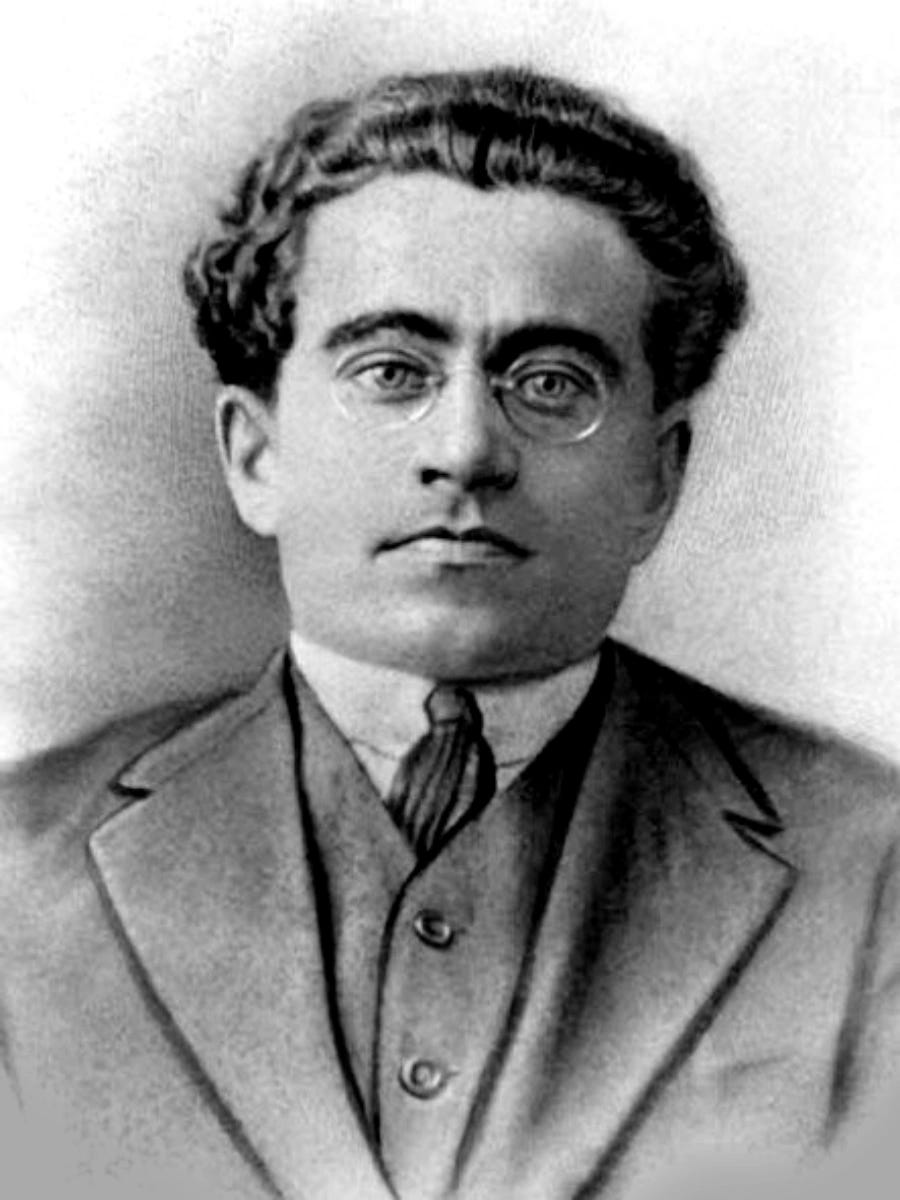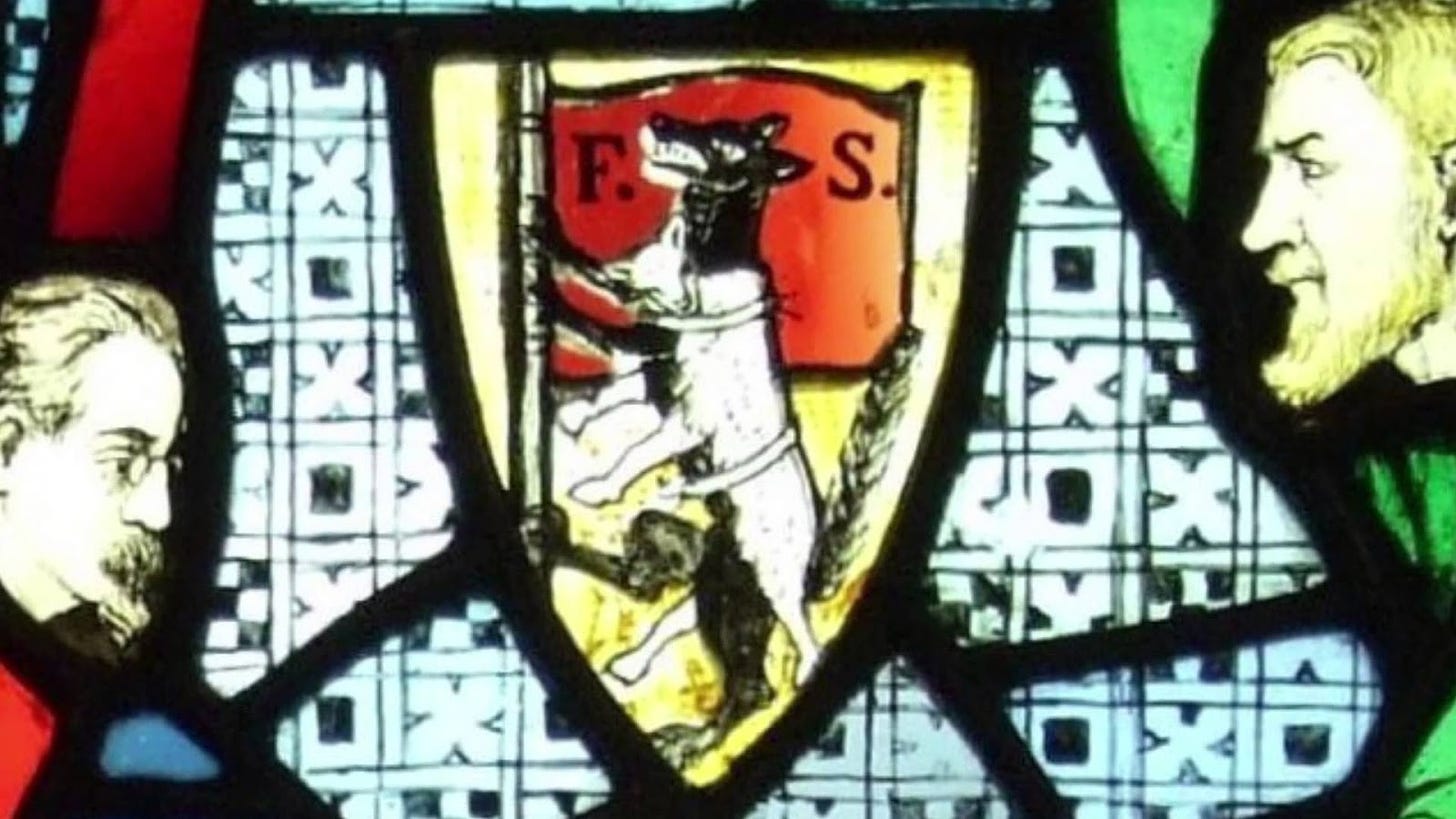

Discover more from Frederick R. Smith Speaks
Gramsci and Firey But Mostly Peaceful Protests
The Italian Marxist leader Antonio Gramsci, jailed under the Mussolini regime, desired “non-violent” transition to collectivism. For leftists, the term non-violent has “evolved.”
With the creation of the Communist Party, the working class broke away from previous traditions and confirmed its own political maturity. The working class no longer wants to work together with other classes for the development and change of the bureaucratic parliamentary state; it wants to work to successfully ensure the development of its own class. It puts forth its candidacy as a ruling class and shows that it would only be able to carry out this historical role in an institutional framework different from the current, within a new state system and not in the pre-existing context of a bureaucratic parliamentary state.
Antonio Gramsci
Introduction
Antonio Gramsci (1891-1937), an Italian Marxist, influenced how we understand power in capitalism. Gramsci was not a professional philosopher. Even so, he contributed as a journalist, activist, and leader in socialism and communism. As a writer and organizer, Gramsci wanted to understand and change Italy’s politics in the early 1900s.
Gramsci studied various intellectual traditions, like Italian neo-idealism. He also studied Machiavellian political thought and different Marxist perspectives. While imprisoned by Mussolini’s regime, Gramsci wrote his essential work, The Prison Notebooks. He studied capitalist culture and the chances of working-class resistance in his writings. Gramsci’s theoretical insights in the Notebooks have recognized him as a significant Marxist thinker.
The Gramsci Story
Starting in the 1950s, progressive intellectuals were analyzing Gramsci’s writings. For example, Joseph Buttigieg (1947-2019), father of Pete Buttigieg (United States Secretary of Transportation). Joseph held the position of William R. Kenan Jr. Professor of English at the University of Notre Dame until his retirement in 2017. At that point, they honored him with the title of professor emeritus. Joseph, a Maltese American, was a Marxist literary scholar and a proficient translator. He helped translate and edit Antonio Gramsci’s Prison Notebooks (Edited by Pete Buttigieg), a three-volume English edition.
Gramsci believed, correctly, that the Catholic Church influenced Italian values. He developed an ideology for the working class known as “Cultural Marxism.” He focused on the Italian Church’s influence on society, highlighting its role in shaping culture and morals. Gramsci’s philosophy had an indirect impact on Catholic Liberation Theology. In the 1960s and 1970s, Liberation Theology developed in Latin America. It was a religious response to the unfairness in society. The goal was to merge Christian faith with a dedication to fairness for all, especially the marginalized.
Marxism was the focus, but Gramsci saw that Christianity could unite different social classes like Marx and Lenin. He understood that Christianity and culture upheld traditional society. That stopped the working class from rebelling. The working class found comfort in their Christian faith despite their struggles. This faith gave them a feeling of freedom, even when others disagreed.
Gramsci wanted to reduce classical organized religion’s impact on Western culture, especially Christianity. He saw Christian influence in society as a barrier. It affected churches, schools, media, families, and popular culture. Gramsci believed Marxism could fulfill people’s spiritual needs and steer them away from Christianity. This approach has seen notable successes in Europe and has gained traction in the United States.
Gramsci supported Marx and Lenin’s idea of a future “workers’ paradise.” He believed in a peaceful way to reach this goal. But modern Leftists try to weaken religion, seeing it as competition for a Marxist revolution. They focus on secular humanism instead of worshipping God. The increase in group violence, like the riots after secular saint Floyd’s death, shows a hidden-in-plain-sight change away from peaceful methods.
Moreover, the Gramsci “non-violent” plan has taken root within the United States justice system. That machine targets those not aligned with the collective with changed and new laws. Non-collective people, like those who oppose abortion, face incarceration under the Freedom of Access to Clinic Entrances (FACE) Act. These people face the violence of prisons. But collectivists get money for burning, looting, and mayhem. Now we know the likely basis for the mantra “firey but mostly peaceful protest.” Thus, the “non-violent” plan is a ruse for today’s collectivists.1
Gramsci believed challenging the bourgeoisie’s (middle class) power through politics is preferable to violence. Different groups fought for control by battling over culture and ideas in politics and economics. Once the working class and its allies secured influence, the leadership would transition to support a new order rooted in Marxism.
The strategic vision emphasized patience and a long-term perspective. It recognized that consensus and a new hegemony (dominance of one group over another) would develop without force. He supported a Marxist party with strong roots in society and collaborated with other groups. They aimed to create a government that would represent the working class.
Gramsci’s plan has been essential in the United States culture war, which aims to make society secular. Marxists view this shift as a means to help their hegemony over the collective consciousness. Central to this strategy is transforming individuals into worldly beings, thereby eradicating religiosity. Once people accept this change, they can embrace the “Workers’ Paradise” without revolution or violence.
This strategy strikes at the heart of Gramsci’s plan and its application today. There is an attack on the Christian mind and culture in the United States. This hidden-in-plain-sight offense aims to weaken the values held by most people. Citizens can only Marxize their inner selves after dismantling classical values.
In the 1990s, leftist elites used Antonio Gramsci’s ideas to support Marxism in the United States and worldwide. Gramsci’s model had dual objectives that reinforced one another. It involved a fusion of Marxist principles with practical adaptations. Some people wanted to change the United States and individual state governments because they believed corporations had too much power. Their vision involved the establishment of a government representing the working class. The movement aimed to reduce Christian influence and alter American culture.
This made European people less religious, creating a Party-State apparatus for global socialism. If Gramsci were alive today, he might give his highest award to “Worship Centers” that follow the Social Gospel or Catholic Liberation Theology. He would recognize their contributions to advancing the goals of this movement inspired by Marxism.
The second goal supports the idea of the European Union to create a civil society without a state. This means that national power decreases while central European power increases. In the 1990s, Gramsci’s revolutionary approach became popular among Europe’s radical Left. Marxism influenced it, and it replaced Soviet Marxism-Leninism.
This belief grew beyond its Eurocentric origins. It developed into a vision of a “Global Village” and a socialist plan for global “social justice.”2 In Europe, Gramsci’s formula is the radical Left’s strategy for worldwide governance. Ultimately, it imagined a society without a government where the people have a say. Meanwhile, behold Marxist Professor Richard D. Wolff gushing over the works of Gramsci.
To explore Marxist perspectives on critical race theory, consider collectivist Ashleigh Shackleford offering a syllabus (or course outline) on the subject. In a video where she discusses her views, she expresses the belief that white individuals are inherently disconnected from their humanity.
Shackelford’s presentation, at the surface, aligns with Gramsci’s “non-violent” perspective. But it’s important to understand that people targeted by this bias face the violence of emotional harm. The idea that “white people are born into not being human” is troubling. It encourages racism toward those who disagree. This tactic is a Marxist strategy employed to sow societal division. Instead of recognizing past wrongs and dealing with pockets of current racism, certain groups generalize. The idea that two wrongs don’t make a right doesn’t resonate with collectivists. Witness this particular acid-like projection:
The absence of a response from individuals affected by this dreadful psychological operation (Psy-Op) raises concerns. The concept of “silence equals violence,” often associated with Marxist dogma, holds validity when viewed objectively concerning those targeted by collectivists. Such a submissive stance can embolden proponents of Marxist ideologies to persist in pursuing the destruction of society as we know it.
With collectivists controlling virtually every element of society, few dare to question the fusion matrix of manufactured bigotry. This matrix includes people from almost every race and creed that project critical THEORY. This cauldron is an equal opportunity power play. To speak up can result in the violence of job loss, ostracization, doxing, etc. Collectivists enjoy seeing people on the receiving end of this violence. It is so pathetic, sadistic, and insurrectionist.
Analysis
Antonio Gramsci’s ideas have significantly influenced the progressive movement in recent years, offering valuable insights into the struggle for “social justice,” cultural transformation, and political change. While Gramsci’s work originated in the early 20th century, its relevance endures and continues to shape the strategies and ideologies of contemporary progressive movements around the world. This essay explored how Gramsci’s concepts, such as cultural hegemony, organic intellectuals, and the role of civil society, have impacted and informed the progressive agenda in recent times.
Cultural Hegemony
Gramsci’s concept of cultural hegemony is perhaps his most “enduring” contribution to progressive thought. He argued that the ruling class maintains its dominance through economic and political means and the control of culture and ideology. In recent years, progressive movements have drawn from this insight to challenge classical society and cultural norms. For example, movements advocating for racial theory, COVID Psy-Ops, and LGBTQIA+ “equity” have utilized Gramscian ideas. They deconstruct society as we know it by embedding viral mems in cultural representations, language, and institutions.
Organic Intellectuals
Gramsci’s notion of organic intellectuals, individuals who arise from “marginalized groups” and possess the ability to articulate their experiences and grievances, has had a profound impact on contemporary progressive movements. These organic intellectuals are essential in shaping the discourse and leading transformative change.
In recent years, activists and leaders from “marginalized communities” have embraced their roles as organic intellectuals. They have used their Marxist perspectives to challenge ordered society and generate momentum for “social justice” and political reform. For example, movements like Black Lives Matter that is driven by “grassroots” leaders. That movement is often funded by dark money that, on the surface, seems to embody Gramsci’s concept of organic intellectuals.
Civil Society and Counter-Hegemony
Gramsci emphasized the importance of civil society institutions as battlegrounds for ideological struggle. He argued that progressive movements should engage with civil society organizations, such as educational institutions, media outlets, and community groups, to promote counter-hegemonic narratives and values.
Political Correctness and WOKE
The connection between political correctness and Gramsci can be understood through the lens of cultural hegemony and the influence of Marxist thought on contemporary discourse and social movements.3 The connection between political correctness and the term “woke” lies in their shared focus on social justice, identity politics, and cultural awareness, although they are not synonymous.4 Political correctness and “woke” are often used to describe a set of beliefs and behaviors related to social justice and inclusivity issues, but they have distinct nuances and connotations. Political correctness (aka woke) stifles free speech and creates a form of cultural conformity.
Today, many big businesses embrace tenants of Woke. They do this through Diversity Inclusion Equity (DIE) and Environmental, Social, and Corporate Governance (ESG). Thus, the snarky meme Willful Order Killing Entrepreneurship (WOKE) has some merit.
The Fabians vs. Gramsci
The Fabian Society and Antonio Gramsci’s ideas share some common themes related to socialism and social change, although they come from different historical and intellectual backgrounds. Here’s a list of items where the Fabians align with Gramsci:
The Fabian Society, founded in the late 19th century, is famous for advocating evolutionary socialism. Gramsci believed in a slow societal change through culture and ideas like socialism. Both the Fabians and Gramsci didn’t want a violent revolution. They strive to reach socialist goals slowly and steadily.
Gramsci believed that intellectuals and cultural institutions shape society through their engagement. The Fabians were, in many ways, an intellectual and reformist movement. They believed in using research, education, and public policy advocacy to bring about socialist change. The Fabians and Gramsci knew winning the battle of ideas and cultural hegemony was crucial to achieving their goals.
The Fabians wanted to make small changes to improve society and help the working class. They believed in reforming the current political and economic system. Gramsci believed in using existing institutions to transform them from the inside gradually. Both groups agreed that it was essential to change existing structures instead of getting rid of them.
Education is essential to both the Fabians and Gramsci. They believed it shaped people’s beliefs and values. The Fabians promoted educational reforms to create a more informed and enlightened citizenry. Gramsci believed that educators and intellectuals could shape the views of the masses.
The Fabian Society and Gramsci developed similar ideas. But they set them at different times and with various foundations. The Fabians were a British reformist group. Gramsci was an Italian Marxist thinker. His ideas had broader implications for socialist movements worldwide.
Fabian’s initial choice of a “wolf in sheep’s clothing” as a coat of arms represented its preferred strategy for achieving its objectives. However, the original symbolism of a wolf in sheep’s clothing was later discarded due to its negative connotations.
Today, the Fabian Society’s emblem featuring a tortoise symbolizes the group’s preference for a gradual and subtle path toward socialism.
Conclusion
Gramsci’s notebooks survived him. Marxists, mainly 60s radicals, embraced them. Their “stepchildren” of today (collectivists) take it to the maximum. Gramsci believed that capitalism’s institutions were the basis of its power, or “hegemony.” The institutions that influenced society include churches, schools, and legacy media. Partners include Hollywood, the government, and political parties.
In recent times, progressive activists and organizations have been following Gramsci’s advice. They have been putting their efforts into education, media, and grassroots mobilization. They tried to change society by sharing different opinions. They do this by promoting inclusive curricula and using social media. Collectivists (aka progressives) want to challenge classical structures by working with society and building coalitions. They even had legacy media touting the inane mantra “fiery but mostly peaceful protests.”
Antonio Gramsci’s ideas have influenced the progressive movement in recent years. He had theories about cultural dominance, intellectuals, and civil society’s role in the world today. Progressive movements now better promote “social justice” (collectivism) by embracing Gramscian insights. Gramsci’s influence shows that a “fair world” requires political action. That occurs through understanding culture, ideology, and grassroots activism.
Western culture will match the global order as it moves from Christianity to a new form of Marxism. This idea comes from Gramsci’s plan, which includes Lenin’s vision of a worldwide Marxist revolution. While the culture war in the United States represents one front in this multifaceted program, it may be the most pivotal one.
The Fabian Society and Antonio Gramsci’s philosophy promote socialism through gradual “mostly peaceful” change. They come from different historical and cultural contexts. They have unique approaches and perspectives. They are part of the broader spectrum of the collectivist thought process.📕
Sources
Shadow World: Resurgent Russia, the Global New Left, and Radical Islam
How Cultural Marxism Threatens the United States—and How Americans Can Fight It
I warmly encourage you to consider becoming a paid subscriber if you have the means. Regardless of your choice, your support is deeply appreciated. From the bottom of my heart, thank you for your invaluable support!
For this essay, collectivists include those who unwittingly accompany the various Communist tenants. It also consists of those who fully understand and embrace the dogma of Marx, Mao, Lenin, et al.
There is a common trait in people who support “social justice” and equality in socialist/communist ideas. Many of them exhibit emotions such as envy, jealousy, and avarice.
Typically, the “wealthy” are not greedy. They innovate and create, leading to wealth. Yet, socialist/communist supporters seem envious of successful people. The collectivists want to share in their wealth. This shows that they are greedy. Even middle-class people who do well because of their hard work face scorn by the collective. Meanwhile, wealthy people who project the collective creed get a pass.
The term “politically correct” emerged in the late 20th century and is generally associated with advocating for the use of language and behavior sensitive to and respectful of marginalized or historically disadvantaged groups. Political correctness aims to avoid language and actions that could perpetuate stereotypes, discrimination, or harm to individuals or communities based on race, gender, sexual orientation, or other identity factors. It emphasizes being considerate and respectful in one’s interactions and communications.
“Woke” has its roots in African American Vernacular English (AAVE) and originally referred to a heightened awareness of social and political issues, particularly racial and social justice issues. Being “woke” implies a commitment to understanding and addressing “systemic injustices,” including racism, sexism, and other forms of discrimination. In recent years, “woke” has been adopted more broadly and is often used to describe individuals or movements that are highly attuned to social justice issues and actively advocating for change.
Subscribe to Frederick R. Smith Speaks
The Frederick R. Smith blog is the ramblings of an uncommon man in a post-modern world. As a master of few topics, your author desires to give readers a sense of the thoughts of a senior citizen who lived most of his life before the new normal.



















America's cultural revolution of woke violence
https://www.wnd.com/2023/09/americas-cultural-revolution-woke-violence/
Just weeks after five others received a similar verdict, three more pro-life activists have been found guilty of felonies that could land each of them in prison for up to 11 years. They also each face fines of up to $350,000. The activists — 74-year-old Joan Bell, 73-year-old Jean Marshall, and 41-year-old Jonathan Darnel — were indicted under the Freedom of Access to Clinic Entrances (FACE) Act.
https://www.catholicnewsagency.com/news/255394/three-more-pro-lifers-guilty-on-face-act-charges-face-up-to-11-years-in-prison